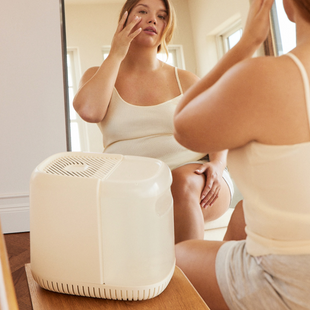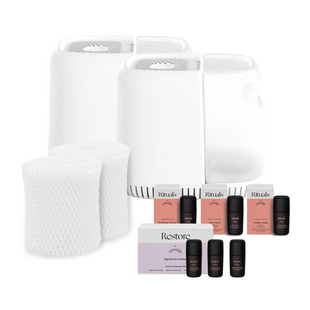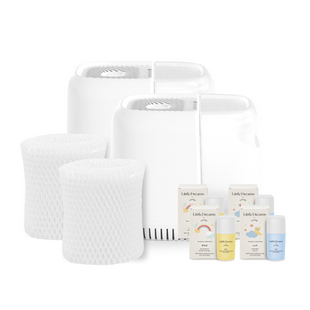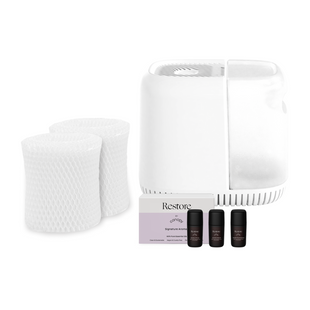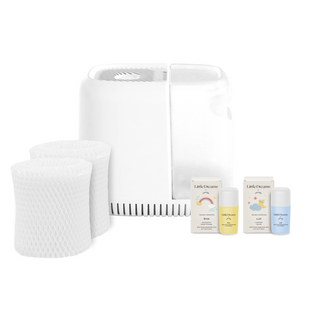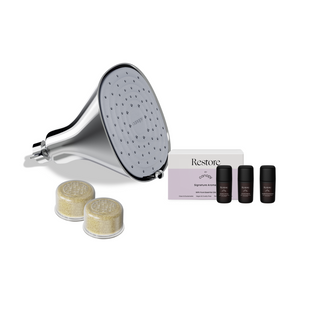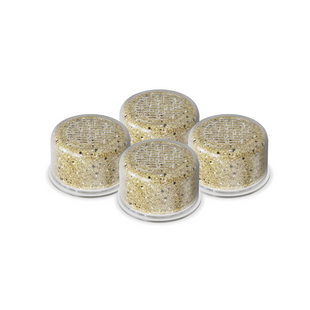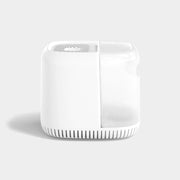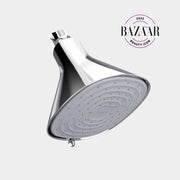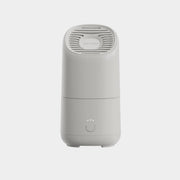The Internet can seem like a cosmic black hole of information. There are so many robust, detailed resources available at our fingertips that we often know detailed facts, stats, or results while lacking an actual foundation.
Think of this blog as “Humidifiers 101,” a brief course with all the information you need to make your first humidifier purchase.
We will answer the following questions:
If you are well-versed in the language of humidifiers, send this crash-course to friends, family, or loved ones contemplating a humidifier purchase or test your knowledge in the sections, below.
Attention: class is in session.
What is a Humidifier?
A humidifier is a home appliance that increases the moisture content of the air otherwise known as “humidity.” A humidifier increases humidity by increasing the volume of moisture in a particular space.
There are two categories of humidifiers: cool mist humidifiers and warm mist humidifiers. While both cool mist and warm mist humidifiers increase moisture content in your home, they have slight differences worth noting.
Cool Mist Humidifiers
Cool mist humidifiers release – you guessed it – cool hydrated air into your space. Ultrasonic and evaporative humidifiers are categorized as cool mist humidifiers. We will discuss exactly how these humidifier types operate in the section “How Does a Humidifier Work?” below.
Warm Mist Humidifiers
Warm mist humidifiers, otherwise known as “vaporizers,” release warmed mist into your space. Vaporizers can slightly elevate the temperature of a room making them a common winter staple. You can learn more about vaporizers in our blog Humidifiers vs. Vaporizers.
What Does a Humidifier Do?
A humidifier increases the Relative Humidity of an isolated space. Relative Humidity (RH) is the actual amount of moisture in the air vs. the maximum amount of moisture the air can hold at a specific temperature. Higher temperatures can hold more moisture than lower temperatures.
Why is some humidity a good thing? Simply put: water is the essence of life. While consuming water is a surefire way of maintaining adequate bodily hydration, atmospheric moisture levels can help further hydrate the body in ways that may not immediately come to mind.

The Benefits of Using a Humidifier
Regular use of a humidifier can have a myriad of benefits for your overall health and wellness.
The benefits of humidifier use include (but are certainly not limited to):
- Rehydrating dry, dehydrated skin
- Rehydrating dry or cracked lips
- Improving the appearance of skin aging including fine lines and wrinkles
- Improving nasal congestion and sinus congestion
- Easing throat irritation
- Improving common cold symptoms
- Reducing the rate of survival for airborne viruses
- Reducing congestion and breathing impairments in babies
- Rehydrating dry, dehydrated skin in babies
- Improving dry, flaky and often itchy scalp

How Does a Humidifier Work?
As we mentioned earlier in this blog, a humidifier works by raising humidity levels in your environment. Before we delve into exactly how a humidifier device operates, you first need to measure the humidity levels in your home.
First: Measuring Humidity Levels
Dry skin? Stuffy nose? Itchy eyes? You may have a humidity problem.
To effectively determine whether your health “symptoms” are related to low levels of humidity, you need to first measure the humidity levels in your home. A hygrometer is a very useful tool that measures humidity levels in any given location; you will need one of these tools to ensure safe use of your humidifier.
Before you head to Amazon to purchase a hygrometer, however, check your home thermostat. Most smart thermostats have a functional humidity reader, which can save you time and money.
The optimal humidity range for your home falls between 40% and 60%, depending on your personal preference. Use your thermostat or new hygrometer to measure the humidity levels in either your home or a particular room (like your bedroom) where you tend to spend most of your time.

How Does an Ultrasonic Humidifier Work?
An ultrasonic humidifier vibrates a metal diaphragm at sonic speed (hence “ultrasonic”) to create water droplets. These water droplets are then blown out into the room with the device fan in the form of cool mist.
How Does an Evaporative Humidifier Work?
An evaporative humidifier draws in air from the room into the device and fans the air through a moistened wick. The air is then fanned back into the room with newly contained water droplets.

How Does a Vaporizer Work?
Steam humidifiers or “vaporizers” release warm mist into the room. This warm mist is created by boiling water from the water tank, which produces a fine vapor. The resulting vapor is fanned into the room, and as mentioned above, slightly elevates the temperature of the room.
Are There any Risks?
As with most household appliances, humidifiers are safe if properly cared for in accordance with the user manual.
If not properly used and cleaned regularly, a humidifier tank can develop mold and bacteria that is subsequently released into the air. In addition, if your humidifier calls for filtered or distilled water and you use unfiltered water, your device may release “white dust” into the air that can trigger allergies or asthma attacks.
Mold & Bacteria
Cleaning your humidifier is a crucial step to ensure proper function and safety of your device.
Sitting water in any capacity, whether in your bathtub, sink, or flower vase, can develop mold and bacteria if not properly cleaned. The same goes with your humidifier water tank.
To learn exactly how to clean your humidifier, you can read our blog “How to Clean a Humidifier.” You should always refer to your user manual for precise directions for cleaning your humidifier. As a general rule of thumb, you should:
- Wipe down your humidifier after each use
- Deep clean your humidifier tank and water reservoir regularly depending on which model you have and frequency of use

White Dust
“White dust” is the result of minerals (like magnesium or calcium) in unfiltered water that are released into the air. If you identify small white specks or a thin layer of white residue on the counter beneath or next to your humidifier, your humidifier may be releasing white dust.
While nothing more than a nuisance on cleaning day for most people, white dust can affect asthmatics, those who suffer from severe allergies, or individuals with lung or sinus problems.
Most humidifiers require the use of filtered or distilled water to avoid polluting your home air with minerals that are harmful to inhale. With Canopy humidifiers, you need not worry about using filtered water in the tank since UV lights kill 99.9% of bacteria, mold, and viruses in the water and our paper filters stop any remaining contaminants from entering the air.

